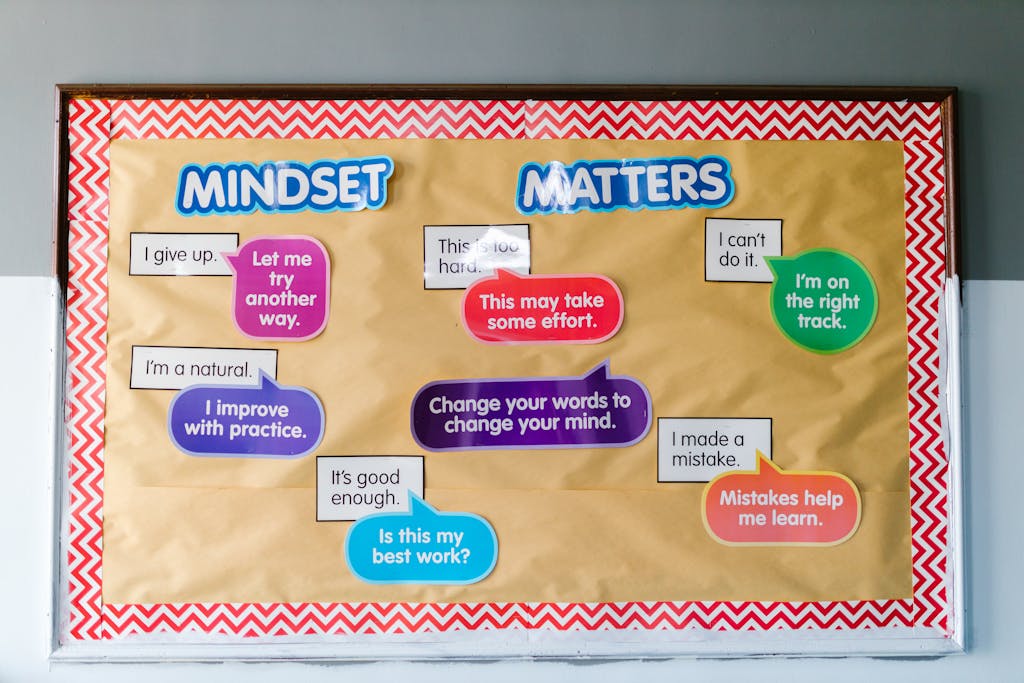In today’s fast-paced world, the power of a growth mindset cannot be overstated. Embracing the belief that skills and intelligence can be developed with effort, learning, and persistence is the cornerstone of achieving personal and professional success. This post will guide you through practical steps to cultivate a growth mindset in just 30 days, enriched with personal reflections from my own journey.

Week 1: Setting the Foundation
Day 1-3: Understand What a Growth Mindset Is
- Definition: Learn about the growth mindset concept coined by psychologist Carol Dweck.
- Read and Watch: Dive into resources like Dweck’s TED Talk, her book “Mindset: The New Psychology of Success,” and relevant articles.
- Reflect: Journal your current mindset and how it affects your life.
Personal Insight: When I first read Carol Dweck’s book, I realized how often I had been operating with a fixed mindset, especially in areas where I faced repeated failures. This awareness was a crucial first step in shifting my perspective.
Day 4-7: Identify Limiting Beliefs
- Self-Assessment: Recognize and write down common self-limiting beliefs.
- Opposite Affirmations: Counteract each limiting belief with positive affirmations.
- Mindfulness: Practice mindfulness to become aware of your thoughts and patterns.
Personal Insight: During this period, I discovered that I frequently told myself, “I’m not good at this,” whenever I encountered difficult tasks. Replacing that with, “I am improving at this every day,” made a significant difference in my attitude and performance.
Week 2: Embracing Challenges
Day 8-10: Step Out of Your Comfort Zone
- Set Small Challenges: Identify small challenges that make you slightly uncomfortable.
- Execute: Take on these challenges and observe your reactions and outcomes.
- Reflect: Journal your experiences and feelings before, during, and after these challenges.
Personal Insight: One of my first challenges was tackling public speaking, something that terrified me. I started with small group settings and eventually worked my way up to larger audiences. Each step out of my comfort zone built my confidence and resilience.
Day 11-14: Learn from Failure
- Reframe Failures: Change your perspective on failures as opportunities to learn.
- Case Studies: Read about successful individuals who have failed and bounced back.
- Self-Reflection: Write about your biggest failures and the lessons learned.
Personal Insight: I remember botching an important project at work early in my career, failing to fully prepare for an important presentation. Initially devastated, I later dissected every mistake and sought feedback from my team and from my leadership. This failure ended up being a pivotal learning moment that shaped my future success.
Week 3: Developing Resilience
Day 15-17: Build Resilience through Consistency
- Daily Habits: Establish daily routines that foster resilience, like exercise and meditation.
- Persistence Tasks: Work on tasks that require sustained effort.
- Track Progress: Keep a habit tracker to monitor consistency.
Personal Insight: Incorporating a daily exercise routine into my already incredibly busy schedule was challenging at first, but it taught me the value of commitment and gradually became a non-negotiable part of my day. This consistency translated into other areas of my life, strengthening my overall resilience and determination.
Day 18-21: Seek Constructive Feedback
- Request Feedback: Ask peers, mentors, or managers for constructive feedback on your work and behavior.
- Welcome Criticism: Practice receiving feedback without defensiveness; view it as a growth opportunity.
- Apply Feedback: Implement suggestions and track improvements.
Personal Insight: Seeking feedback was intimidating, but when I started viewing it as a tool for growth rather than criticism, I became more open to it. Constructive feedback from a mentor played a critical role in my professional development and helped me advance in my career.

Week 4: Fostering Lifelong Learning
Day 22-25: Adopt a Learning Mindset
- Curiosity: Pursue new knowledge or skills that interest you.
- Learning Resources: Use online courses, books, or podcasts to fuel your learning.
- Engage: Participate actively in learning communities or forums.
Personal Insight: Learning basic web design and starting a blog seemed like daunting tasks I pursued out of sheer curiosity. Initially, it seemed inscrutable, but with dedication and the support of online courses and communities, I gradually improved. This experience reinforced the belief that persistent learning opens new doors.
Day 26-30: Continuous Improvement and Reflection
- Review Progress: Reflect on your growth over the past month.
- Set Future Goals: Identify areas for ongoing improvement and set new goals.
- Celebrate Successes: Recognize and celebrate your achievements, no matter how small.
Personal Insight: At the end of the month, reflecting on my journey was rewarding. Acknowledging small wins kept me motivated. For example, completing a challenging online course felt like a significant triumph, reminding me that every step forward counts.
Conclusion
Developing a growth mindset takes commitment and effort, but the rewards are invaluable. By following these steps, you will start to see changes in how you perceive challenges, failures, and your ability to learn and grow. Remember, the journey doesn’t stop at 30 days—continue to nurture your growth mindset every day.






6 Comments
Comments are closed.